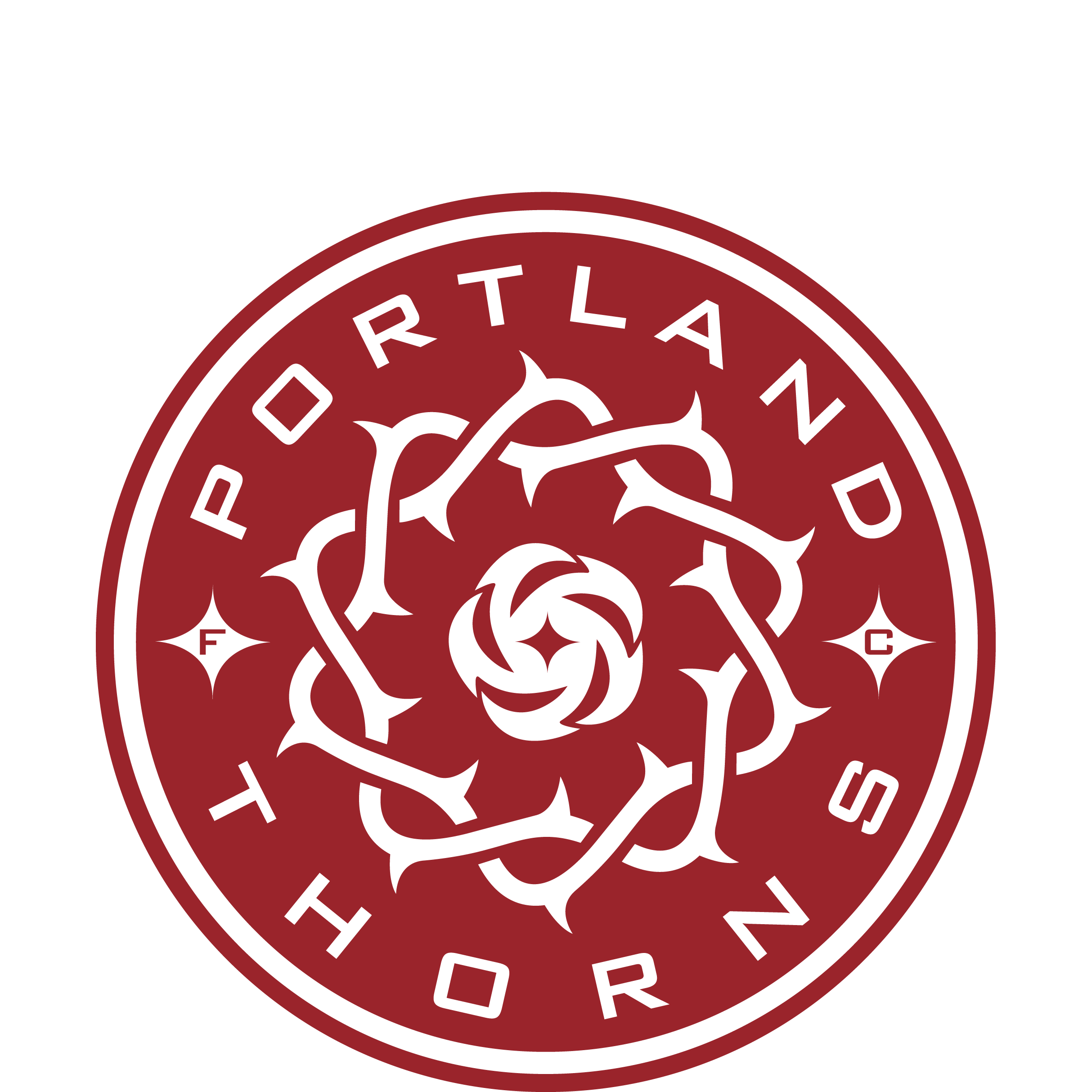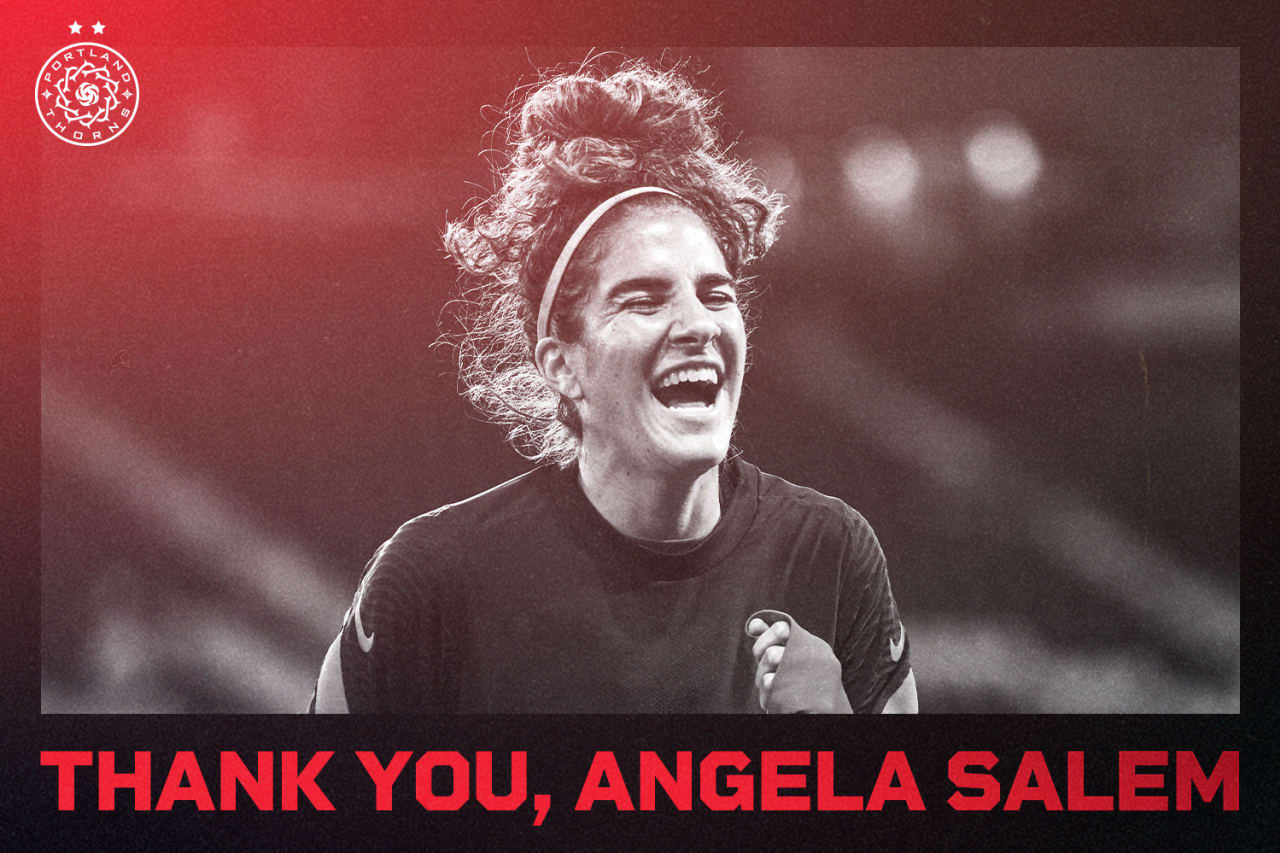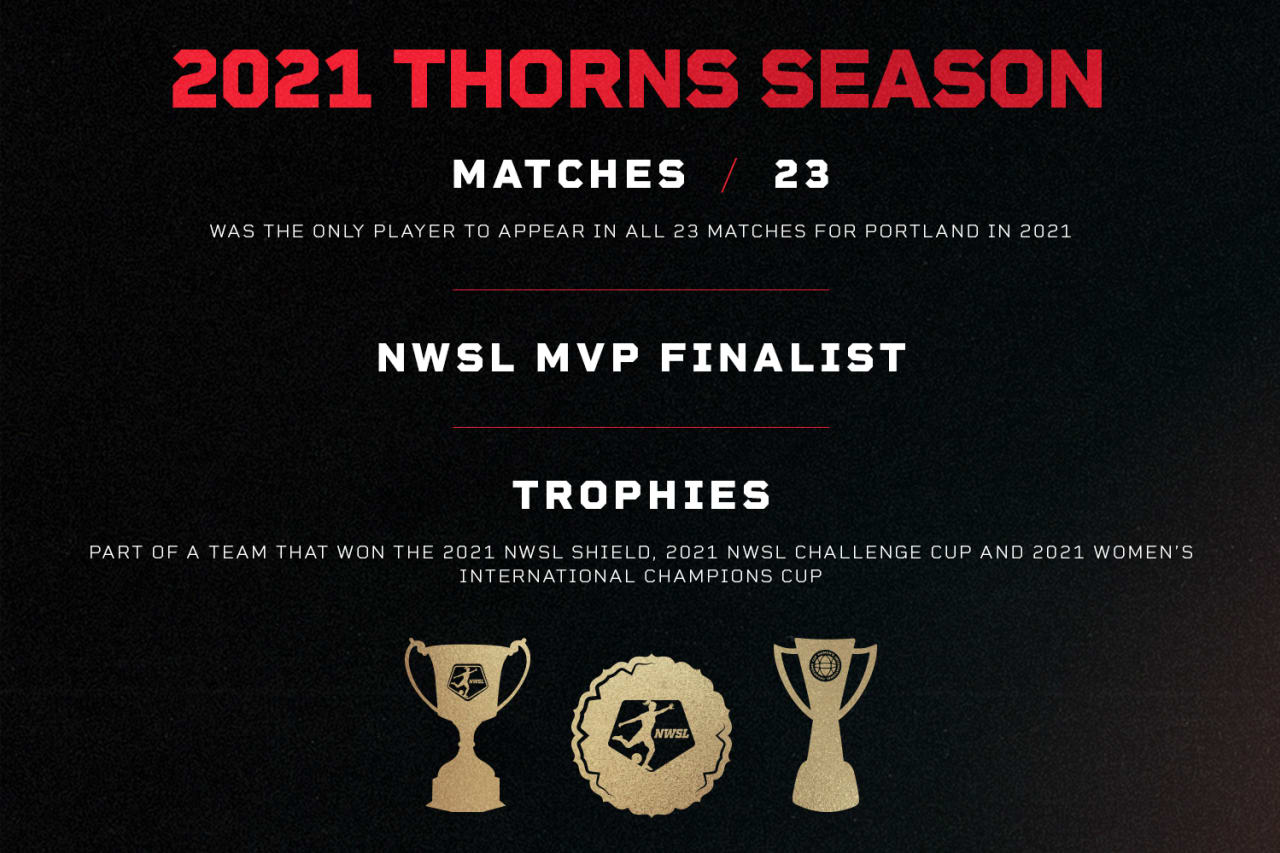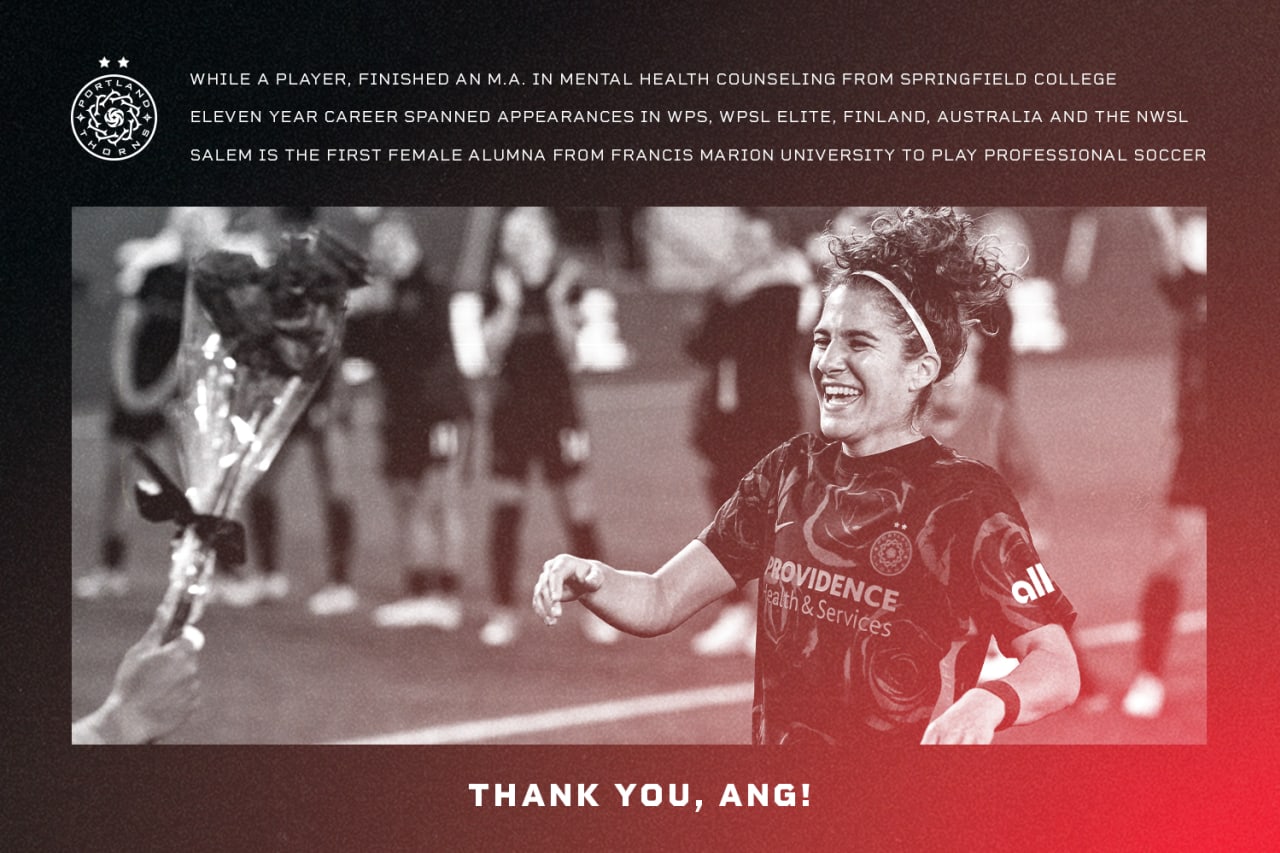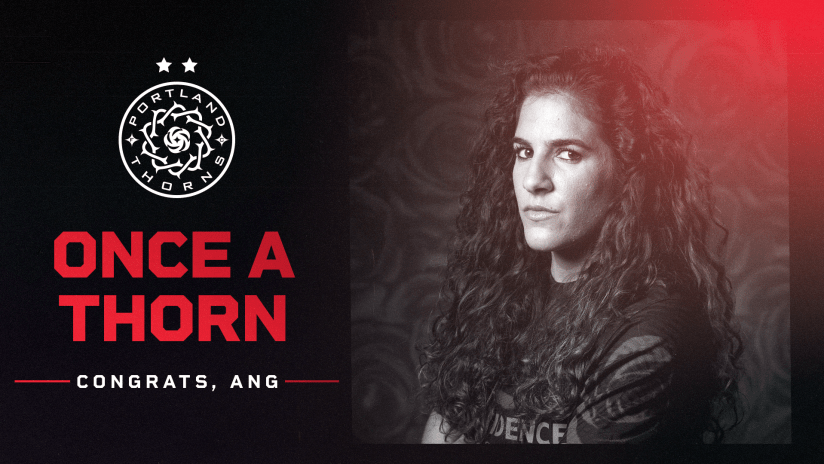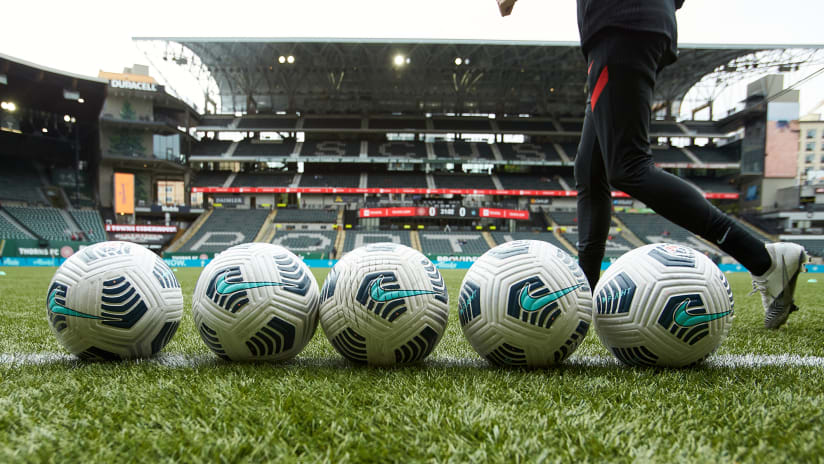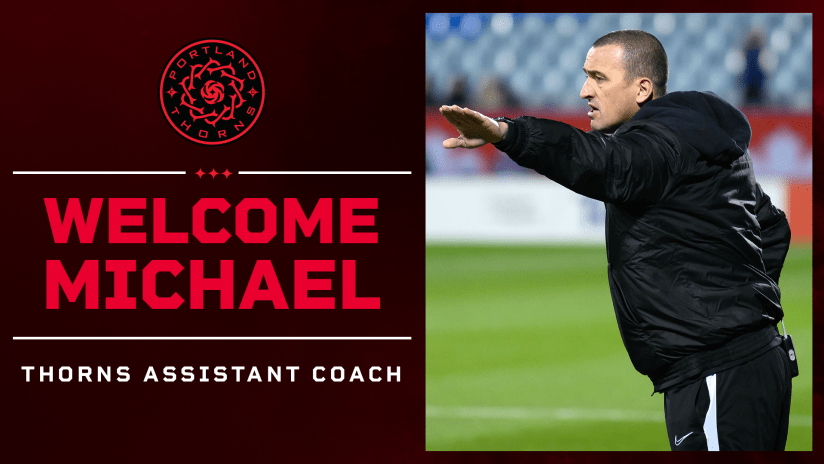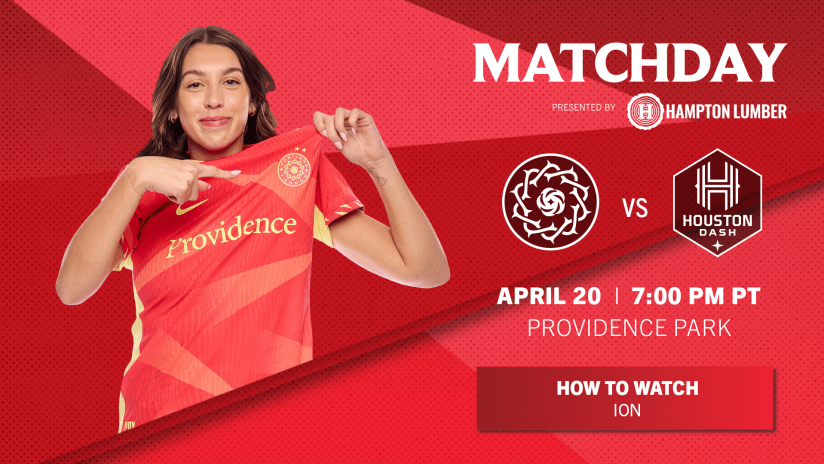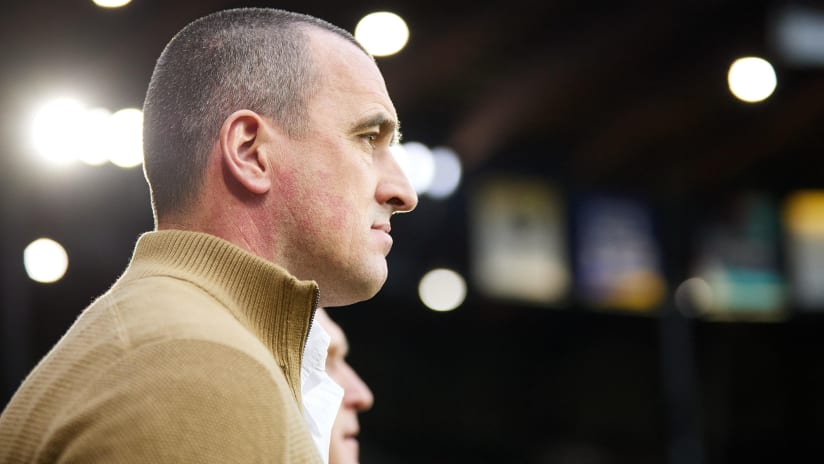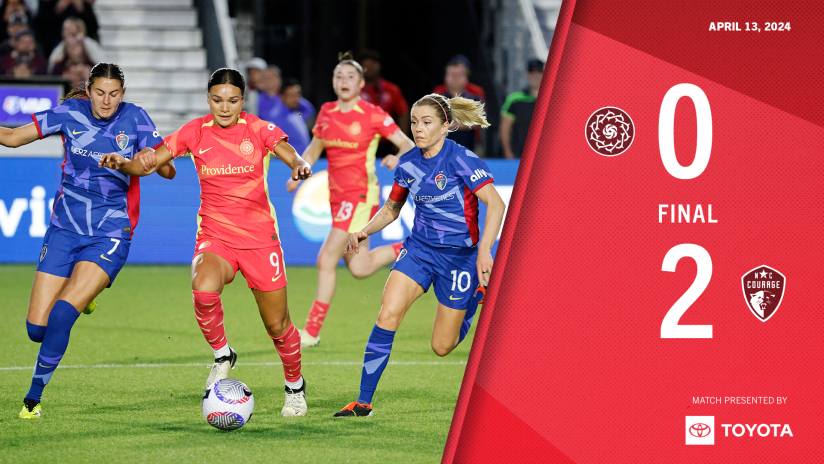PORTLAND, Ore. — In the week before the National Women’s Soccer League’s announced the league’s first Collective Bargaining Agreement, Angela Salem, a midfielder for the Portland Thorns, began telling her teammates what they already assumed. They’d assumed it throughout the 2021 season, when she led her team to first place in the regular season and earned a spot among the league’s Most Valuable Player candidates. They assumed it even though she had established herself as the best defensive midfielder of the season.
They hoped she’d change her mind, but they knew her path, and they saw what she’d gone through to play 28 games at 32 years old. It was a career high, and defensive mid, a “destroyer,” can be a demanding position. Salem battled injuries all season, just none so bad that they would keep her from playing, so they stayed off the injury report. By the end of the season, Salem’s first days of training each week were spent on the sidelines, loosening up when protecting her ribs, ankle, and move.
Salem was retiring, though she could certainly play more. But she’s put in 12 seasons as a professional, and she's been putting off her new phase for so long. Two years ago, Salem got her master's degree and has long been looking to start a career in athletics and mental health. One final, complete, successful season in Portland is all she wanted.
“I wanted to play from full-on start to full-on end, for an entire season in Providence Park,” she said one day before her retirement became public, alluding to the obstacles that cut her previous three seasons short. In 2021, with those obstacles alleviated, Salem was arguably the most important Thorn.
With her “entire season” drawing league-wide renown, Salem can move to her next steps as the NWSL does the same. The coincidence isn’t lost on her. It’s players like Salem, surviving without spotlights, national team security, or contracts with guarantees beyond their current seasons, that allowed the NWSL to get to this point. As of Tuesday morning, players can count on a minimum salary of $35,000 for 2022, four percent increases each season, benefits that cover housing, retirement contributions, paid parental leave, as well as provisions that assure wages while players address their mental health.
Salem’s first professional contract paid her less than $1,000 a month. It went down the next season. She lived with a host family, was out of a job at year’s end, and began a journey that left her living in five cities over seven years and looking for opportunities on three continents. The landscape of the NWSL has evolved.
"Just having that CBA in place will be the most changes, ever ...," Salem said when asked what's how the women's soccer landscape has changed from 2010, when she turned professional, to 2022, when she said goodbye to the field. "It embodies everything that the league has needed." Players like Salem played a huge part in where the sport is now.

Salem’s path to a celebrated retirement feels like something from a Disney writer’s room. She’s from a soccer-loving family – the fourth of four Akron children guided into the game by parents who loved the sport. Mom played, coached, while some of Salem’s earliest childhood soccer memories involve the likes of Zidane, Pirlo and Ronaldo on TV as Dad, also a coach, watched. O “I just remember being dragged around to tournaments with my parents, with my siblings, travelling,” she says. “We would just play around, play on the side. It started when I was young because I was just doing what my siblings were doing, what my parents were doing, and I learned it from them.”
She was all-state in an attacking role as a senior in high school and had paths to Division I schools, though opportunities at the University of South Carolina and the University of Charlotte didn’t work out. She ended up at Francis Marion University - a program trying to transition to college soccer’s top level – seeding a lifetime of questions about her little-known alma mater. T
“At the time, it was either you were drafted or it’s open tryouts,” Salem says when asked about her steps from college to pro. Women’s Professional Soccer was about to enter its second season. "I started looking up [tryout dates] from there. Obviously, I wasn’t going to get drafted coming out of Francis Marion University.”
It was 2010, and the team closest to Francis Marion, the Atlanta Beat, gave her a shot. When they asked her to play in the second tier, the W-League, she moved on to Sky Blue FC, where she earned a contract for her rookie season.
“I had to pay for my own hotel, rent a car. I think I spent over $1,000 dollars just trying to try out and make this team. [I] didn’t get paid until I signed as a developmental player. I think, at the time, my paycheck was like $800 a month, maybe. Or $600 a month. I think it was $600 a month, honestly. I was really hard.”
WPS life wasn’t good for players on the back half of team rosters, but for an undrafted player who had to earn a contract through tryouts, it was particularly tough.
“I lived with a host family. A lot of players lived with host families at that time. There wasn’t full housing for the team, and if there was housing, it was probably four or five players smashing into a house.” She contrasts 2010 with 2022. “It wasn’t fully furnished, you and a roommate, everything included.”

The next year, she was released back to the tryout circuit. Soon she found herself back in Atlanta, where a Beat team made up of players trying to prove themselves gave her a home.
“We were the worst team in the league, and it was quite the experience. But it was probably my most valuable experience because that’s when I started to play defensive mid a little bit. And I learned what it was like to be at the bottom. [I] never wanted to be there again.”
Before the next season, WPS folded, forcing a league’s worth of Salems into life-changing decisions. Some went into other careers. Others went back to school. Salem herself was planning on nursing but still had a window before she had to commit. She chose to go to Western New York, where a number of players who’d go on to long pro careers decided to play out the gap between leagues.
There, she completed her transition from a creator who earned scholarships and pro opportunities to somebody who helped establish the Flash’s identity. She settled in as a defensive midfielder — somebody as willing to break up play as promote it — and found the version of herself that would carry her through another decade on the field.
"When I got to Western New York in 2012, Aaran [Lines] really molded me into the position. He was really tough on me and made me into a really disciplined player – pretty much the player I am, that I continued to be after that.
“It was something that I never saw, myself – something that I never expected.” When she first started playing the position in Atlanta, she disagreed with the move. “It’s funny, [because] it was where I stayed for the next 10 years.”
The open tryouts, relocations, finding her identity on the field. They were all part of her story’s first act. So were the low paychecks, out-of-pocket expenses, and after-hours coaching that made up a women’s soccer player’s world. When she established herself as a starting-caliber player she had opportunities to play year-round. During her years with the Flash, she was able to follow a friend, Australian international Emily Van Egmond, for two seasons with the Newcastle Jets down under.
Those trips add to Salem’s vagabond tally. So does the time she spent with Åland United in Finland before landing in Western New York. From her senior year at Francis Marion to her 2016 move to the Boston Breakers, Salem played for eight teams in eight years, and she was far from alone. As the WPS folded and the NWSL tried to survive, the Angela Salems of the world became globetrotters and bridge builders. If they were going to last long enough to be a league’s foundation — if they were going to span the gap from insolvency to stability — it would require them to look across the globe for ways to support their careers.
"It was really horrible,” Salem remembers when asked about her career’s first years, when WPS went away without a first division to replace it. “I have just signed for Atlanta for my third year in WPS, because it was happening … I was like, ‘alright, this is going to be a big year for me.’ When the league unexpectedly folded, I was like, ‘What am I going to do now?’
“I didn’t plan for it. I didn’t have a backup plan.” It forced her to adopt a mindset that would carry her through the first years of the NWSL, too. “It was one of those moments where I had to just figure out a solution, so I just started calling teams.” She went to Western New York and converted the penalty kick that won the Flash its 2012 WPSL Elite title, but when she left for Rochester, she “just to fill the next few months until I figured out what I was going to do … I was thinking my career was over …"

It wasn’t until Salem landed in Boston, four years into her NWSL experience, that her career’s second act came into focus. By then she was 27 and had enough experience to be seen as a stabilizing force for teams that needed one. In Washington and Boston, that meant young squads looking to establish themselves, as well as teams who, fighting for playoff spots, didn’t garner the same attention as those at the top of the table. She was a veteran, established in the league’s inner circles, but somebody whose play was constantly overlooked. There was limited bandwidth for soccer fans to devote to the NWSL; even less for a defensive midfielder often overshadowed by players whose potential mattered more than their present.
“I think I probably normalized the first four of five years of my [NWSL] career, even though it’s not normal,” she says, now. “It was an interesting experience because even in 2013, we (the Flash) lost in the finals. I was one of the players that started every game and played significant minutes and played a huge part, and then there was an expansion draft, and I was left off the protected list.”
In 2015, she was traded to Washington. After being left protected the year before, Salem was fine with that move. She didn’t want to move to Boston in 2016, though, even if she ended up enjoying her time with the Breakers. Washington’s new coaching staff chose to move her on.
From 2013 through 2016, she played for three different teams. She ended up being a key player for each one.
“I would say it wasn’t my best year the first year [in Boston], because I think I was like, ‘Why does this keep happening?’” She laughs at the absurdity of it all. “’I play on these teams, I play a huge role, and I was the one that was always getting moved around.’”
The 2017 season was a perfect example of Salem being overlooked. Boston was going into the second year of a massive rebuild, on that included a coach, Matt Beard, brought over from England. Year one was tough, with too many young, inexperienced players learning the league alongside a young, inexperienced coach. By 2017, though, things were starting to click, not only because of the lessons of 2016 but because of Salem’s performance. A leader in the middle, Salem was the league’s best defensive midfielder that season, providing a platform for the team’s recent draftees to mature.
“The second year [in Boston], we had the foundation,” Salem remembers. “We had the players. We really underachieved that year in Boston, honestly … It was one of those stories where we would be doing well, then we would give up a goal. Things didn’t fall our way. But if you do take a step back, once more people got more experience and once I figured out how to mesh well with the other people, it all came together [for me] that second year in Boston.”
It was her teammates’ maturation that garnered most of the attention, though. When it came time to explain why the Breakers were improving, page inches focused on players like Rose Lavelle and Midge Purce. They were current or future U.S. internationals. Megan Oyster, Christen Westphal and Morgan Andrews had been high draft picks, while Natasha Dowie and Adrianna Leon were established internationals. Implicitly, it was decided the story of the Breakers would be "young group comes good.” That just wasn’t the only story of their season.

Salem also saw this in Western New York, where the attentions of 2013 focused on players like Abby Wambach and Carli Lloyd. It was understandable, but it was also unfortunate for players like herself, Tori Huster, Katherine Reynolds and McCall Zerboni - players who helped establish that team’s core. In Washington, Crystal Dunn had an MVP season amid a World Cup year, while later in Portland, a roster laden with talents like Christine Sinclair, Becky Sauerbrunn, Lindsey Horan and, in time, Dunn meant elite performers like Emily Menges could fly under the radar. After arriving in Portland, Salem became the Menges of the midfield.
At least, she got there eventually. In 2018, after arriving in Portland through the Breakers’ dispersal, she didn’t join the team until the summer – until after her grad-school work allowed her to switch coasts. She only played five games that season, starting one in her Thorns debut before winning the holding-midfield job in 2019. Three games after doing so, she tore her anterior cruciate ligament, sidelining her until an ill-fated 2020. Covid-19 cancelled that campaign, leaving teams competing for summer (Challenge Cup) and fall (Community Shield) trophies, extending Salem’s time as a Thorn.
“The first year, I knew I was going to come out late and leave early,” she says. “And then the second year, I knew I was going to go out late, but I was going to stay through the season, and I’ll reevaluate. That was 2019.” After she tore her ACL, she said, “well, I can’t retire now. In have to come back from this. That would be such a horrible way to end my career.”
Those delays allowed Salem to become a key part of the Thorns’ culture, though in a way that was different than her roles, before. Portland didn’t need her for the same reason Boston needed Salem. They need her for the player she’d become. They needed what she did to liberate players like Dunn, Horan and Rocky Rodríguez, and protect players like Menges and Sauerbrunn. They needed somebody to be the metronome, to set the attack and defense. They needed Salem because she is that good.
Had she not injured her knee in 2019, she might have left after that season. In the two years that followed, her resume bloomed. She was a part of teams that won four trophies, her first team honors since leaving Western New York. She proved she could not only play among the elite but draw their praise. On the league’s biggest stage, she became the league’s best at her position and left that pedestal with people discussing whether she was the NWSL’s Most Valuable Player over the course of the season. She did all this while being almost the exact same player she was in Boston.
“The league can be so brutal, sometimes ...,” she concedes. “You see it with every team. Some of the last place teams, their players never get acknowledged when they’re doing [great things] … But that happens all the time. Being in Boston for those two years, plus I was in grad school, plus I was older. Why would anyone want that?”
It’s another act of normalizing. Maybe that’s part of the reason Salem lasted so long. Why would anybody want one of the league’s best midfielders, she asks. Given all she accomplished, Salem shouldn’t have to explain herself.
It’s important people remember all this: the origins, the journey, the spotlights as well as the shadows. It’s important people recognize the work, but it’s also important that they recognize the context. Over 12 seasons, Salem was the type of player that made the NWSL possible – the type of player whose sacrifices built a foundation for the sport’s future. It was only in the last moments, when she was surrounded by similar talents, that the world recognized the player she’d become.
That’s the story. That’s the final act coming to its conclusion. Angela Salem didn’t just perform, preserve, and earn the recognition she deserved. In so many ways, she became the player who embodied the first nine seasons of NWSL soccer. She was stellar, whether that was recognized or not.
